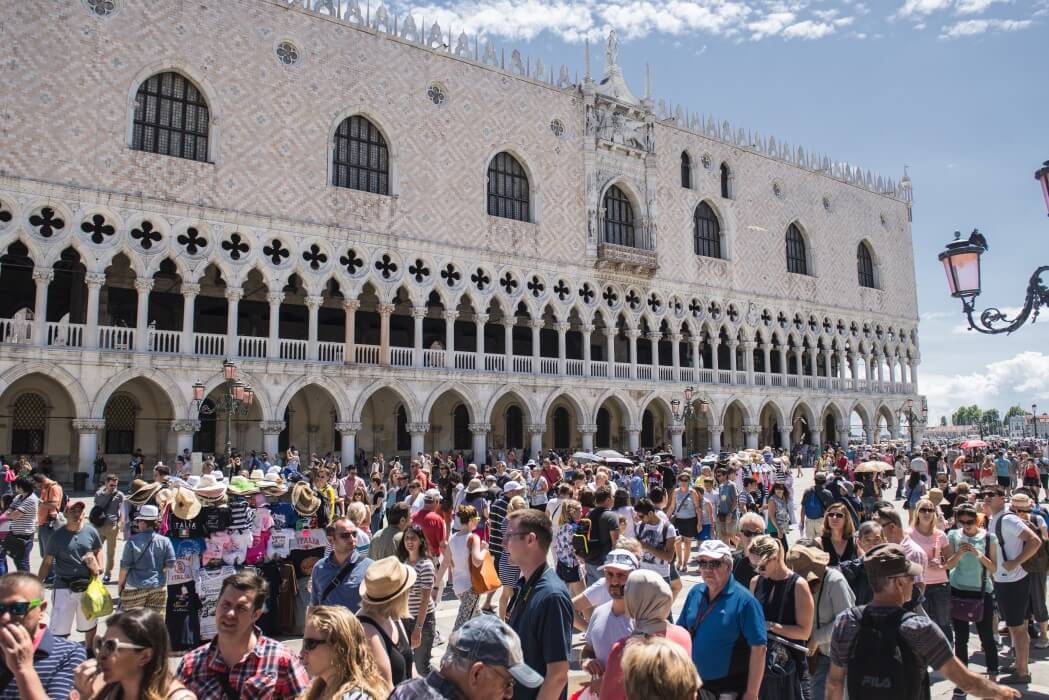Europeans are analyzing the ways which would help reduce the impact of overtourism on the continent's environment. Europe is visited by 500 million people per year. At the same time, the authorities are trying to ensure that whatever measures are taken, they do not negatively influence the economic benefits.
According to the data provided by the United Nations World Tourism Organization, in 2016, 40% of the world's tourists – some 500 million – visited one of the European Union's 28 countries – confirming its privileged position within the industry.
2016 was the seventh consecutive year of sustained tourism growth for Europe which received 107 million more tourists than in 2008 – the year of the financial crisis. Countries such as Spain, Italy and France top the list of favorites, each one receiving an average of 60 million visitors annually.
However, this flow of tourists poses problems for governments who are looking to regulate it. In 2017, Italy's Minister of Culture Dario Franceschini stated that “Italy's artistically important sites need to be protected against overtourism, they cannot welcome enormous numbers of visitors. We are aware of the fact that the areas surrounding the Trevi Fountain in Rome, Piazza San Marco and the Ponte Vecchio in Florence are suffering congestion problems”.
In May 2017, the municipality of Venice introduced a “person counting system” at the city's key sites such as the Rialto bridge and the access to San Marcos. Fines will also be given to those who dip into the Grand Canal or who improvise picnics at historical monument sites. Venice has fewer than 60 000 inhabitants and welcomes over 20 million tourists every year. In 2013 there were already some protests against the arrival of enormous cruise ships: activists of the "No Grandi Navi" movement took to swimming in the waters when, in September of 2013, 13 cruise ships entered the harbor in a single day. From that moment on, it was decided that only 2 ships would be permitted to enter per day.

In the city of Genoa, the peak month for cruise ship arrivals is October, a fact which has also provoked protests dating back at least as far as the "Costa Concordia" shipwreck - in January 2012 - off the region's coast. As an illustration of the problem, it is worth noting that in October 2014, 6 cruise ships carrying 14 000 passengers arrived in a single day.
According to data provided by Liguria's Chamber of Commerce, the region of Genoa was host to 15 million tourists in 2016 – generating a total tourism revenue of 5.3 billion euros. It is difficult for the Genoese to regulate their tourism industry since even in the winter months – January and February – they receive more than a million visitors.
In Spain, Barcelona is a city of 1.6 million inhabitants and it receives more than 7 million tourists yearly. When these tourists go on organized tours they put severe strain on the city's taxi and bus services. It is for this reason that in 2015, Ada Colau, Barcelona's mayor announced that the construction of hotels in the city's historical center would be banned and that the arrival of cruise ships would be regulated. "My biggest concern is that we will end up like Valencia", Colau said.
According to data supplied by the University of Barcelona, cruise ship tourism generates 796 million euros for the city annually, and that, of the total number of tourists who arrive in the city every year, at least 2 million enter via cruise ship.
Copenhagen, the capital of Denmark, is one of the world's foremost destinations for business travelers and transatlantic cruise ships. Nine million people visit the city every year, a record for Denmark which only has six million inhabitants. That is why in Copenhagen the establishment of new bars and restaurants has been prohibited. It is also the reason why bicycle routes for tourists were created and why there are already “silent areas” within residential areas in which it is prohibited to speak loudly while walking in the streets. In addition, Denmark forbids foreigners from buying houses in coastal areas or along its beaches.
France has led the way in terms of regulation of overtourism, at least since the 1950s. Today French officials debate over whether Bordeaux needs another five star hotel, or which Alpine ski center needs new ski lifts, or whether or not more houses should be built in Provence for the purpose of being rented. Tourism and the respect for France's heritage are topics of discussion in the media and in politics.
The Eiffel Tower in Paris receives more than 7 million visitors per year and the tickets sold limit the time that the visitors may spend on the site to half an hour. Street vending in the area is strictly regulated and the surrounding gardens are cared for by specialists. Also, anyone who dares to throw an empty soda container or an unlit cigarette on the ground will be heavily fined. Restrictions similar to those in Paris are also applied in many other areas of the country. In France, tourism is considered and planned within the context of the preservation of the rural landscape, vineyards, small and coastal towns as well as ski centers and large cities.